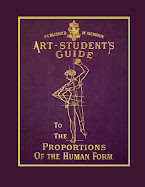



This book was published in 1794 and included 191 pages and 24 etched plates.
John Bell (1763-1820), born in Edinburgh Scotland, was a surgeon and anatomist. John Bell is considered the father of modern vascular surgery. His other works include “Principles of Surgery”, and “Anatomy of the Human Body”.
He illustrated his own work.
Wikipedia page.
A more complete biography at Electric Scotland.com.
Another image at Scotland Medicine in Print.
A post about why John Bell chose to do his own art work at Street Anatomy.
An image from the University of Nottingham.
An image from Engravings of the bones, muscles, and joints, illustrating the first volume of the Anatomy of the Human Body by John Bell from the National Institute of Health's exhibition Dream Anatomy.
At Amazon.com
The anatomy and physiology of the human body. Containing the anatomy of the bones, muscles, and joints, and the heart and arteries, by John Bell; and the anatomy and physiology of the brain and nerves, the organs of the senses, and the viscera, by Charles Bell.
The anatomy and physiology of the human body. By John and Charles Bell. The whole more perfectly systematized and corrected by Charles Bell.... The fifth American edition; (reprinted from the sixth London edition of 1826.) The text revised, with various important additions, from the writings of Soemmering, Bichat, Beclard, Meckel, Spurzheim, Wistar, &c. by John D. Godman.
Anatomy of the Human Body 4 Volumes bound as 2
The anatomy and physiology of the human body
The Anatomy of the human body


















































